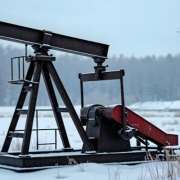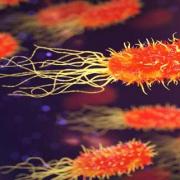No filter will save us – particulate matter kills
Anyone knowing this blog and I sure knows the rationale. Diesel is garbage that is incinerated in a driving waste processing plant (the diesel engine). This produces huge amounts of highly toxic side products, which reach us through the exhaust shaft of the vehicle. Much of it reaches our lungs and some of them (the most toxic components of those exhaust gasses) enter the bloodstream, our muscles, our bones, our organs, and even our brains. They accumulate there and kill us – slowly but with deadly certainty.
The smallest particles reach the inside of our cells and even the cell’s core. This means that they modify our DNA (genetic makeup) and that in turn means that Diesel exhaust slowly transforms us into mutants. There will be another post on the exact journey of one diesel particle into our bodies.
Combusting diesel fuel produces huge amounts of toxins, most of them deadly to humans. To comply with ever more stringent air emissions regulations such as EURO6, diesel engines have become monsters of technology. However, all this technology just attempts to remove an infinite fraction of what leaves the exhaust end of the combustion chamber.
The overwhelming fraction of all exhaust gas is nitrogen – 72%. Then there is a bit less than 20% CO2 and about 8% water vapor. Have you done your math? 72 plus 20 plus 8 makes 100% but as there is slightly less CO2 and water vapor, it is exactly 99,913 percent. The rest is 0,087 percent and consists mainly of nitrogen oxides, and carbon monoxide with 0.086 percent. Fine particulates and anything else are only 0.001 percent.
Let us run some comparisons. A bottle of supermarket-bought water usually contains 1.5 liters of liquid. A little over a liter of that bottle would be filled with Nitrogen. CO2 would be about a quarter of a liter. A thimble full is going to be Nitrogen Oxides, Carbon Monoxide, un-combusted hydrocarbons, and fine particulates. Particulate matter alone is not going to be more than the mass of the micro SIM card of your iPhone. Bear in mind – it’s a micro SIM in a 1,5 liters bottle – or about 50 ounces of liquid.
Not much – isn’t it? Especially if you hold the 0.33-liter can of Coke, which symbolizes the CO2, against the micro SIM card.
However, this whiff of fine particulates is potent stuff. Contrary to CO2, it is highly toxic and hence directly detrimental to human life. Furthermore, those fine particulates are no homogenous substance. You can roughly separate particulates into the fine stuff (fine particulates) and ultra-fine stuff (nano particulates). All emissions regulations do today is measure the total mass of all particulate matter emitted without attaching much importance to particle size.
Why is that important? Generally speaking – the smaller a particle is, the deeper it intrudes into our bodies. PM10 particulates have an average diameter of 10 micrometers or the hundredth part of a millimeter. They get stuck in the mucous membrane of the bronchial tube where it causes inflammations. PM2.5 (well, the same story with 2.5 micrometers) reaches the alveoli and anything smaller enters the bloodstream. Particulates below 0.1 micrometers (I guess you have it now) will cross the blood-brain barrier and reach the brain. Particles smaller than 0.01 micrometers will cross cell membranes to the inside and even move into the cell core.
That is potent stuff. However, the bucket does not even stop here. As a rule, the smaller a particle is, the more toxic it gets relative to its volumetric size and mass. The total mass of particles emitted is relatively unimportant. Much more important is how many of the particles are ultra-fine stuff. For comparison – one gram of PM 0.001 is about one billion times more toxic than one gram of PM10 and I don’t even factor in the chemical load.
Most particulate filters used today in diesel vehicles are wall flow filters. In such a filter, the flow of exhaust gas passes by a wall that consists of a catalyst, which causes the particles to adhere and accumulate. However, modern diesel engines operate at very high pressures and even higher temperatures to power all the additional technology required to clean the exhaust so the flow is excessively strong and does not allow for decent adhesion.
Some vehicle makers admit freely that today’s particulate filters are essentially unable to cope with today’s emissions standards, as they cannot retain the smallest particles. These are the most dangerous, though.
This means particle filters retain the bigger stuff, which does not harm us so much, and they do not filter the smallest stuff – which kills us – at all. All measurements on the efficiency of those filters are useless as today’s measurement methods are not capable of detecting real small particles. Usually, the cloudiness of the smoke in the exhaust is measured to detect particulate matter. However, at a certain size particulates became aerosols, which means they do not cause any visible smoke anymore. Hence, they are invisible to the measurement device.
Just measure particles from an EURO6 engine with a device that is capable of detecting very fine particles reliably and they all fail the test. They will fail right after the factory gates. Diesel technology has run its course.
Besides, there are so many stacked processes interacting now that one’s process benefit often cancels out the other or makes other things worse. As an example, the particulate filter usually features a regeneration mechanism to get rid of accumulated soot. This soot is burned off and turns into CO2, which in turn increases Greenhouse gas emissions. That means, the better your particulates filter works, the more CO2 you produce. That’s nuts, don’t you agree?
However, it gets still worse. Measurements of different vehicle types have turned up evidence that this process also produces the super-poison Dioxin (remember Bophal and Seveso?). It also contains hefty amounts of the heavy metals Rhodium, Palladium, and Platinum. These metals are catalysts in the catalyzers and Dioxin is produced when soot is burned at high temperatures as this soot is loaded with chemicals and other aromatics. Biologically produced diesel produces the most Dioxin of all fuels.
EURO6 is a big, fat lie as it makes us believe that diesel can be clean but that is not the case – and it can’t be. All this expensive, complex, and maintenance-hungry filtering technology does not work out. We even breathe more of the real nasty stuff because the engines run hotter and with higher pressures. The German automobile expert Ferdinand Dudenhöfer said in 2013 that diesel as a fuel had run its course and that for the next decade, we are going to witness a gradual decline in the use of diesel. That’s right, as all this filtering simply does not make sense anymore.
We must stop producing stuff that makes us sick, and miserable and will ultimately kill us. With LNG and CNG we have perfect, ultra-clean, and technologically mature solutions that do not need a lot of filtering of exhaust gasses to comply with clean air legislation.


















Leave a Reply
Want to join the discussion?Feel free to contribute!